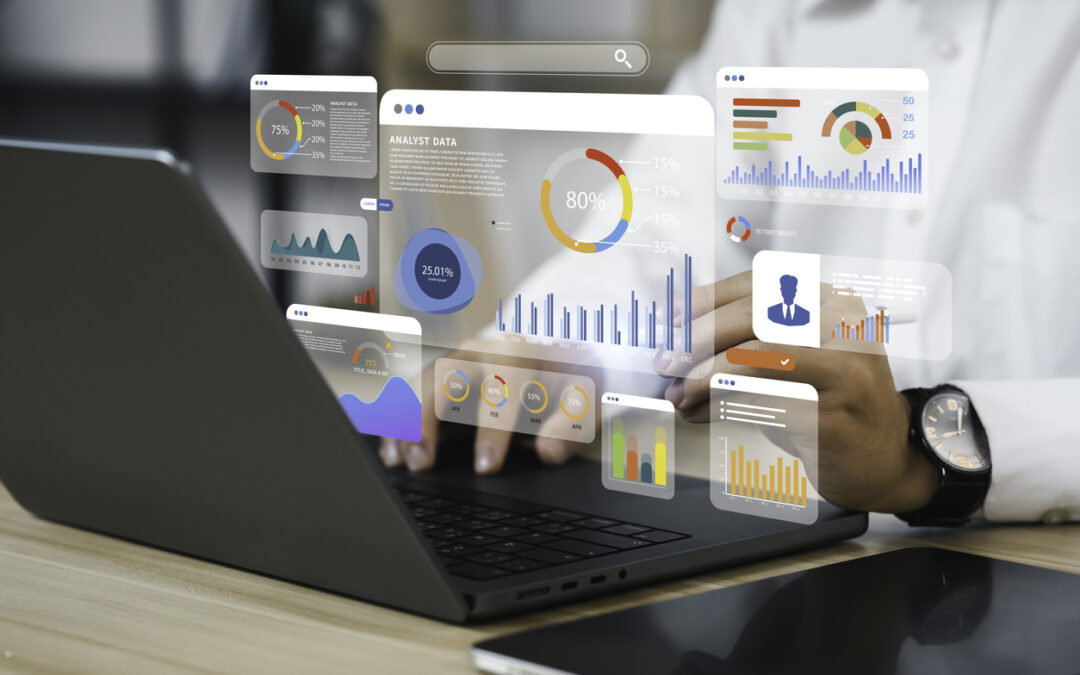Best Practices and Trends When Leveraging Insights for Success
In today’s digital landscape, data analytics plays a pivotal role in shaping effective digital marketing strategies. Data analytics in digital marketing refers to the systematic collection, analysis, and interpretation of data generated through various digital channels and marketing activities. It involves using specialized tools and techniques to extract valuable insights from the vast amounts of data available.
By tracking and analyzing metrics such as website traffic, click-through rates, conversion rates, and customer demographics, marketers can gain a comprehensive understanding of their target audience, identify trends, and make data-driven decisions to enhance their marketing efforts. Data analytics in digital marketing enables marketers to personalize campaigns, improve targeting, allocate resources effectively, and continuously optimize their marketing initiatives for maximum impact and return on investment. Let’s take a closer look at the role of data analytics in digital marketing and how to leverage its insights for success.
Top 7 Uses of Data Analytics in Digital Marketing:
- Understanding Consumer Behavior – Data analytics enables marketers to gain a deep understanding of consumer behavior by analyzing various data points. By tracking website interactions, social media engagement, email click-through rates, and more, marketers can uncover valuable insights about their target audience’s preferences, interests, and buying patterns. This understanding helps shape marketing strategies that resonate with consumers and drive engagement.
- Personalization and Targeting – Data analytics empowers marketers to deliver personalized experiences and targeted messaging to their audience. By segmenting and analyzing customer data, marketers can identify specific customer groups and create tailored campaigns based on their preferences and needs. This personalized approach increases relevance, engagement, and conversion rates, leading to more successful marketing outcomes.
- Campaign Optimization – Data analytics provides the ability to measure and analyze campaign performance in real-time. By tracking key performance indicators (KPIs) such as click-through rates, conversion rates, and ROI, marketers can identify which strategies and tactics are most effective. This data-driven approach allows for continuous optimization and refinement of campaigns, maximizing their impact and efficiency.
- Customer Journey Mapping – Data analytics enables marketers to map out the customer journey and identify touchpoints where potential customers interact with their brand. By analyzing data from different channels and devices, marketers can gain insights into the customer journey’s various stages, such as awareness, consideration, and conversion. This knowledge helps optimize marketing efforts at each stage and create a seamless and personalized customer experience.
- Predictive Analytics – Leveraging historical data, predictive analytics helps marketers forecast future trends and outcomes. By using advanced algorithms and machine learning models, marketers can make data-driven predictions about consumer behavior, market trends, and campaign performance. This foresight allows for proactive decision-making, early identification of emerging opportunities, and strategic planning.
- Return on Investment (ROI) Analysis – Data analytics enables marketers to measure the ROI of their digital marketing efforts accurately. By tracking and analyzing data related to campaign costs and performance metrics, marketers can assess the effectiveness and efficiency of their marketing investments. This insight helps allocate resources strategically, optimize budget allocation, and justify marketing decisions to stakeholders.
- Continuous Improvement and Adaptation – Data analytics facilitates a culture of continuous improvement in digital marketing. By regularly analyzing data, marketers can identify areas for improvement, uncover emerging trends, and adapt their strategies accordingly. The ability to measure and analyze data in real-time allows marketers to stay agile, make data-driven decisions, and respond swiftly to market changes.
Best Practices in Leveraging Insights Gained From Analytics
Leveraging the insights gained from data analytics refers to the process of effectively utilizing the information and knowledge extracted from large sets of data. It involves employing various techniques and tools to analyze, interpret, and draw meaningful conclusions from the data. By leveraging these insights, organizations can make informed decisions, optimize their operations, and gain a competitive edge in their respective industries.
Data analytics allows businesses to uncover patterns, trends, and correlations that may otherwise go unnoticed, enabling them to identify opportunities, address challenges, and enhance their overall performance. To fully leverage the insights gained from data analytics, marketers should consider the following best practices:
- Define clear objectives and key performance indicators (KPIs) to align data analysis efforts with business goals.
- Utilize a combination of analytics tools, such as Google Analytics, social media analytics platforms, and marketing automation software, to gather and analyze data from various channels.
- Ensure data quality and accuracy by implementing proper data collection and cleansing processes.
- Invest in skilled data analysts or partner with analytics experts who can interpret and derive actionable insights from the data.
- Continuously monitor and evaluate performance metrics to identify areas for improvement and adjust strategies accordingly.
- Stay updated on the latest trends and advancements in data analytics to leverage new technologies and techniques effectively.
Latest Trends in Data Analytics
The field of data analytics is constantly evolving, with new trends and advancements emerging to leverage new technologies and techniques. Here are some of the latest trends in data analytics:
- Artificial Intelligence (AI) and Machine Learning (ML) algorithms are being utilized to automate data analysis processes, enhance predictive modeling capabilities, and uncover hidden patterns and insights in large datasets.
- Natural Language Processing (NLP) techniques enable the analysis of unstructured data, such as customer reviews, social media posts, and text documents, allowing businesses to extract valuable information and sentiment analysis.
- With the proliferation of IoT devices and streaming data sources, real-time analytics has gained prominence. Organizations can now process and analyze data as it is generated, enabling immediate insights and faster decision-making.
- Automation is being integrated into data analytics workflows to streamline repetitive tasks, such as data cleaning, preprocessing, and report generation. This allows analysts to focus on more complex and strategic analysis.
- Cloud-based data analytics platforms offer scalability, flexibility, and cost-effectiveness, allowing organizations to store and process large volumes of data without the need for extensive on-premises infrastructure.
- With increased concerns over data privacy and security, data governance practices have become critical. Organizations are implementing robust frameworks and processes to ensure data quality, compliance with regulations, and ethical use of data.
- Augmented analytics combines AI, ML, and natural language processing to enhance the data exploration and visualization process. It empowers non-technical users to access and analyze data independently, leading to faster insights and data-driven decision-making across the organization.
- Visualizing data in an interactive and compelling manner is crucial for effective communication and decision-making. Advanced data visualization tools and storytelling techniques help analysts present complex findings in a more understandable and actionable way.
These trends and advancements in data analytics offer exciting opportunities for organizations to leverage new technologies and techniques effectively, driving innovation, efficiency, and competitive advantage in their data-driven endeavors.
Target your ideal customers, connect at scale, and nurture the relationships.
At Bruck Marketing, we know the power of informed iteration. Especially if something isn’t working, we want you to know about it, so we can adapt and improve outcomes. We’ll create transparent reports and guide you on the best way to use your CRM and other tools to track performance from lead source to point of sale.
Data and research are at the heart of our process. In addition to measuring and adapting your campaigns, everything we do is informed by leaders in research across key disciplines. Let’s discuss your objectives and come up with a right-sized plan for your business. Drop us a note today!

